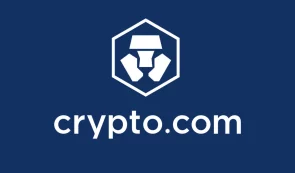What is Cronos
Cronos (CRO) is the digital token of the crypto exchange Crypto.com. CRO is the native cryptocurrency of the Crypto.com open-source blockchain and the Cronos EVM chain, which runs in parallel. Cronos’ EVM chain claims to be the first Ethereum-compatible blockchain built using the Cosmos software development package.
Originally known as Monaco, the project changed its name in 2017.
As most people in the crypto space know, Crypto.com is a financial services platform that offers trading, payment channels (via an app or Visa cards), an options marketplace, and NFT trading.
The CRO token powers all applications in the Crypto.com ecosystem.
Due to its specific design and consensus proof-of-stake mechanism called Tendermint, CRO tokens are not mineable. To give access to anyone looking for exposure to cryptocurrencies, the founders of Crypto.com created a platform to meet the needs of investors, traders, and businesses.
CRO Offering
The total supply of CROs has been capped at 30 billion tokens after an initial 70 billion tokens were burned. Another 10.4 billion are locked in smart contracts and are being burned every few months.
- 20% of this supply goes to general capital
- 20% to long-term network incentives
- 10% to community development
- 20% frozen for ecosystem subsidies
- 30% will be distributed on a daily basis over five years.
CRO Staking
CRO staking on the Crypto.com network rewards users. Anyone who stakes tokens on the network can become a validator and validate transactions. The benefits can be:
- Access to VISA cards on Crypto.com
- Cashback rewards, discounts, and other benefits associated with your wallet on the platform
- Higher APR
Staking rewards are generated every 5-6 seconds and depend on the level of the user. For example, the reward is 10% for level “Jade Green” and 12% for level “Obsidian.” The rewards are distributed every week.
Specifics of the CRO blockchain
Crypto.com’s blockchain is built on Ethereum, making it ERC20 compliant.
CRO’s blockchain architecture is designed to facilitate mobile payments through various specialized features that are achieved through multiple nodes. Each node supports a separate layer, as described below.
Council nodes
Council nodes manage transactions, validation, and settlement and receive processing fees by receiving compensation for each transaction they process.
Acquirer nodes
These nodes provide escrow services, manage payments for other users, and provide other services and checks related to merchant transactions. They are compensated based on the amount of each transaction they process.
Settlement agent nodes
Settlement agents sell tokens to CROs for stable currencies and settle their transactions to ensure that merchants can access stable price conversion options after settlement. The nodes in question are compensated with a fixed fee for each fiat payment they process.
Community Nodes
Community nodes help customers and merchants transact directly and serve as a home base for users who wish to monitor various transactions.
Use cases
As previously mentioned, Crypto.com offers the following categories of services:
- Payments: Crypto.com Pay, Visa cards
- Trading: via the Crypto.com app and the exchange
- Financial services: decentralized products, passive income, loans
- Metaverse: NFT
- Blockchain Infrastructure: Crypto.org Chain, Cronos



